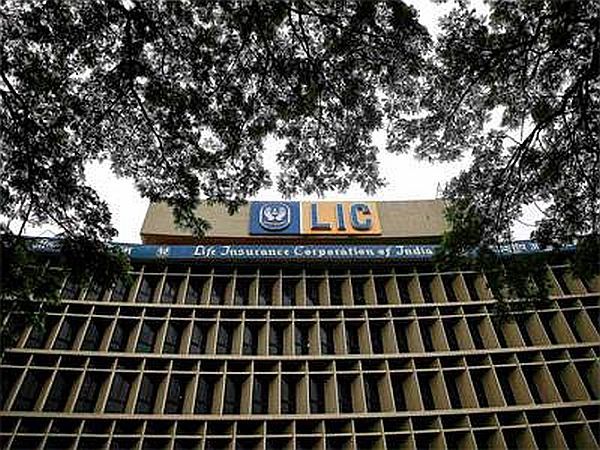It is the nature of insurance products, how they are sold and the government's lock on LIC for such patriotic duties as rescuing badly-planned share sales, notes Debashis Basu.
 On 24 August, as the global markets were crashing all around us, the Sensex had plummetted about 1,700 points at one time.
On 24 August, as the global markets were crashing all around us, the Sensex had plummetted about 1,700 points at one time.
Once again, the Life Insurance Corporation of India (LIC) stepped in to rescue one more share-sale plan of the Government of India.
Media reports say that almost 86 per cent of the Rs 9,300 crore (Rs 93 billion) raised from the government's stake sale in Indian Oil Corporation (IOC) that day came from the LIC.
This one small event says a lot about a dark corner of the financial services industry that 23 years of slow liberalisation has not touched at all. It is the nature of insurance products, how they are sold and the government's lock on LIC for such patriotic duties as rescuing badly-planned share sales.
Just about two weeks after the LIC rescued the IOC disinvestment issue, the Committee to Recommend Measures for Curbing Mis-selling and Rationalising Distribution Incentives in Financial Products came out with its report.
Ironically, the committee was headed by Sumit Bose, former disinvestment secretary who is surely familiar with the routine LIC-led rescue operations. Set up by the Ministry of Finance last November, the committee zeroed in on three products to discuss: insurance, mutual funds and pension products.
What is of interest to us is the committee's recommendation about the main products sold by the insurance industry, especially the LIC. These are traditional insurance plans that are used to rake in money from people, which the government feels free to use.
Traditional plans are the biggest area of concern for consumers. They are opaque and sometimes sold with false promises and misleading advertising.
No wonder, the committee "spent most of its time trying to find a way to suggest disclosure and cost changes in this product (traditional plans)" and suggested far-reaching changes such as:
1. A split of the premium into mortality and investment for all new traditional products.
2. Use of relevant benchmarks created by an independent agency to truly reflect the performance of the investor's money.
3. The LIC also lends money, like the UTI used to. The loan portfolio of insurance companies should follow the best practices of loan valuation prescribed by the RBI.
4. Lapsation profits, if any, should not accrue or be booked by insurance companies. The costs of surrender should be reasonable. After deduction of costs, the remaining money should continue to belong to the exiting investors.
5. All costs should be bifurcated into two parts - mortality and investment. Mortality costs should be benchmarked to the mortality tables created by third-party actuarial firms. Investment costs should be capped, benchmarked to banking or other small savings products for non-participating plans and benchmarked to mutual fund or the National Pension System, for participating plans.
6. All charges should collapse into one single charge called the expense charge. This charge should be deducted from the gross yield before crediting the net returns to the customer's account. No charges should be deducted as premium allocation charge or any other charge before allocating the annual premium to investment and mortality.
7. Upfront commissions should be allowed for the mortality part of the premium but not on the investment part. Commissions should not be front-loaded and not be paid in advance.
8. The illegal practice of rebating should be punished harshly.
The committee has also prescribed strict standards of disclosure, suggesting that the guaranteed return part should be disclosed separately (they are comparable with a bank deposit) and that returns should be disclosed as a percentage of the total premium paid and as a percentage of the investment amount.
This will allow retail investors to make better comparisons. For participating plans, the current practice of showing future returns benchmarked to four per cent and eight per cent should be discontinued and instead insurers should disclose how much a policyholder actually got for a similar product that matured recently.
While the committee has not gone into the issue of misleading advertising, it has argued that the current industry practice of using the word bonus to indicate return is misleading because bonus means extra amount of money that is added to a payment, which is not in case of insurance.
In short, the committee has described what the life insurance products should really be if they have to be consumer-friendly.
If these recommendations are accepted, it will hit hard the biggest sub-segment (traditional plans) of the biggest financial product segment (insurance) and the biggest insurer, the government-owned LIC. Who will pick up government debt and share sales then?
The best outcome of this report would be for the finance ministry to plan a roadmap of over, say, three years, to wean the LIC away from traditional plans, make it leaner and plan not to use it as an arm of the government.
It's only then that life insurance buyers would stop being exploited. Time for another committee?
The writer is the editor of www.moneylife.in











